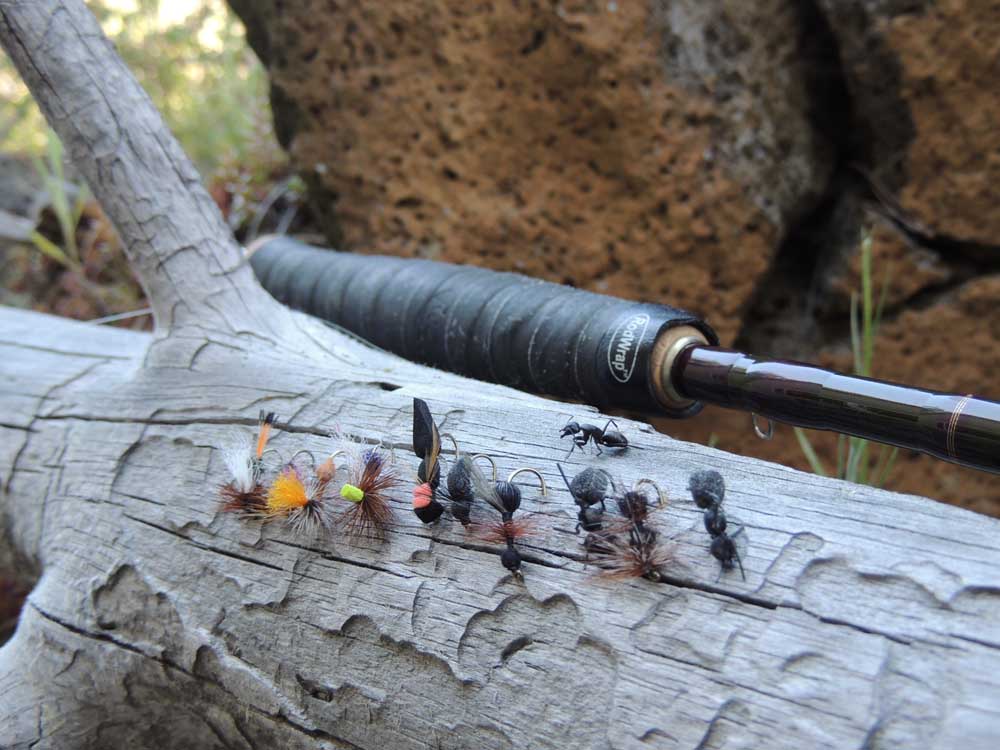Fly-fishing with ant patterns
Published 12:00 am Wednesday, June 10, 2015

- Gary Lewis / For The BulletinA black cloud of carpenter ants is a boon for trout in Cascade lLakes and it can signal fast fishing if an angler is armed with a selection of patterns.
“Do you really need any dry flies other than ant patterns when fishing in a heavily clear-cut region?”
That question had stumped me. It was still in my mind down along the river.
Jeff Morgan, the author of “Productive Trout Flies for Unorthodox Prey,” (Amato, 2012), answered his own question: “In Oregon and Washington, where clear-cuts are as common as self-help specials on Oprah, flying ant patterns are far and away one of the most productive small stream flies.”
There’s a pretty little freestone stream that heads in the Newton Clark Glacier and hooks around the mountain to flow north. There’s a place to park where the rig can be hidden from the road.
This would be a quick tramp through the woods I thought, but the heavy blow-down left over from last winter had not been cleared from the trail. After a half-mile of walking through the trunks of fallen trees and swinging my legs over timber, I followed the sound of water to the riverbank.
I’d already decided on a fly. It was a foam-bodied No. 14 Rainy’s Red-Butt Carpenter ant with black legs and a red wingpost for visibility.
Down at the bend there was timber in the water and two deeper slots adjacent to a backwater channel.
The red wingpost stood out in the riffled water, and I saw a slim dark form streak up from the bottom, slash at the fly then turn away. On the next cast I caught and released a small cutthroat.
In pocket water, there’s always one good spot that will be dominated by one bigger fish. When I had the angle right, I rolled a short cast to the edge of the seam on the darkest water and saw a 10-inch rainbow eat the fly and turn with it. He broke my 6X tippet.
Over the course of the next hour, I lost all my ant patterns but the last and biggest one. Most of my flies adorn branches and driftwood. While I sat on logs and tied and retied tippets and flies, I had plenty of opportunity to observe ants — all black — from the very tiny up to a carpenter ant so big it could have starred in its own movie.
After my imitations were wet, they didn’t float well, but, even drowned, they caught fish. The trouble was seeing the trout and the grab in the swift water.
In 35 years of fly-fishing, I’ve treated ant patterns as novelties. I’ve always had them in the box, but have seldom used them. Not so anymore.
Looking back, I guess I’ve missed out on imitating ants because they don’t show up well on the water and are quick to drown. It’s not easy to fish them dry on fast currents, but lakes are a different story.
Consider an alpine lake in the Cascades. Perhaps a wildfire killed a lot of timber, or a series of small clear-cuts opened up the forest canopy. Such places are home to ants, and when populations get too big, a generation of winged adults flies off in large swarms to populate new territory.
This is likely to happen in the morning on a warm day between May and September. If they fly over the water in tricky wind, thousands of unlucky ants may be blown onto the water where they are greeted by hundreds of lucky trout.
The trick lies in imitation. Ant patterns are easy to tie, but there are many types. According to author Jeff Morgan, most ants encountered by trout have wings. Some choices are Raffia, Z-Wing and CDC. Morgan ties ants with sparkle dubbing for its reflective quality.
Morgan’s favorite ant is the No. 14 Cascade Flying Ant which employs black Ice Dub, brown hackle and grizzly hackle tip wings. The contrasts make the fly easier to see on the water.
Do you have to carry any other trout flies than carpenter ant imitations in June and July? Of course you do, but you don’t have to use them.
— Gary Lewis is the host of “Frontier Unlimited TV” and author of “John Nosler — Going Ballistic,” “A Bear Hunter’s Guide to the Universe,” “Hunting Oregon” and other titles. Contact Lewis at www.GaryLewisOutdoors.com.






